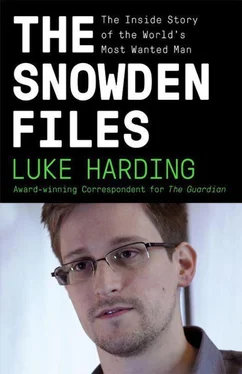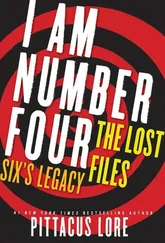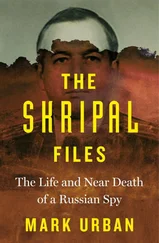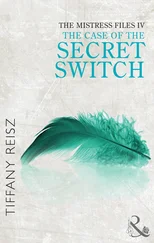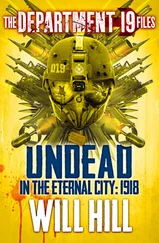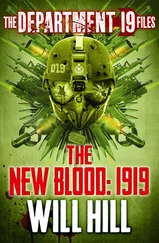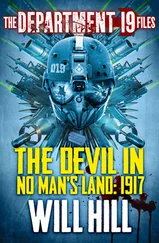All along, Snowden had made clear that he planned to reveal himself. In New York, the record of Snowden actually speaking was nevertheless cathartic. And reassuring. ‘We were completely blown away. We thought he was cool and plausible. Everything about him seemed credible,’ Millar says. When the moment arrived, with the video ready to go live, the atmosphere in the newsroom was deeply emotional. ‘It was a terrifying moment,’ Gibson adds. The editorial question remained: was this the right thing to do? Once again Snowden was making his own strategic choices – playing his increasingly limited hand of cards his own way.
Five people, including Rusbridger, were in the office. The video went up around 3pm local time. ‘It was like a bomb going off,’ says Rusbridger. ‘There are a silent few seconds after a bomb explodes when nothing happens.’ The TV monitors were set to different channels; for almost an hour they carried pre-recorded Sunday news. Then at 4pm, the top of the hour, the story erupted. Each network carried Snowden’s image. CNN aired the entire 12-minute video.
It was 3am in Hong Kong when the video was posted online. Twitter instantly exploded. It was to become the most viewed story in the Guardian ’s history.
‘It’s a rare thing for a source to come out in public like that. So we knew this video was going to be big,’ MacAskill recalls. ‘The choreography of several huge stories followed by the video was terrific.’
One moment, Snowden was known only to his friends and family, and a few colleagues. Then suddenly he became a global phenomenon, no longer just an individual but a lightning rod for all sorts of conflicting views about the state, the boundaries of privacy and security, and even the entire modern condition.
Snowden took all of this with sangfroid and humour. Sitting in room 1014 he chatted online with Greenwald and MacAskill, and joked wryly about his appearance, and the online comments it provoked. It was the first time he had seen the video. (Poitras had sent it to him before but he had had problems with his internet connection and couldn’t access it.) There was one inescapable corollary: now Snowden’s identity was out, he had just become the most hunted man on the planet.
The chase was already on. Greenwald, in one of his many TV interviews, had been captioned by CNN as ‘Glenn Greenwald, Hong Kong’ – a pretty big clue to everyone watching as to the location of the Guardian ’s source. The local Chinese media and international journalists now studied every frame of the video for clues. They were initially thrown off by Poitras’s opening shot, filmed from the W Hotel. They assumed Snowden was there too. But one enterprising hack then used Twitter to identify the Mira from its lamps.
By Monday 10 June, Snowden was packing his belongings to leave the hotel, as Poitras filmed him for the last time. She felt protective towards him. She had known him the longest, and had believed in him from the beginning. She gave him a hug. ‘I don’t know what he planned for that moment. I had no idea what his next move was,’ she says.
Snowden vanished.
At the W Hotel, MacAskill popped out to get a cup of coffee, and to buy himself a suit and a shirt. He had brought enough clothes for a two-day assignment. A crew from CNN doorstepped him. When he returned from Marks and Spencer he found a scene of chaos. TV crews and reporters had staked out the lobby. Not only that but the management said the hotel was now ‘full’ and asked them to leave. They slipped out via a service lift to a waiting taxi and moved into the Sheraton. By the evening, the hacks had found them again. Before going to sleep, MacAskill piled chairs in front of his door. This might give him some warning if someone came for him, he reasoned.
Two days passed. Greenwald, MacAskill and Poitras marked the end of their trip with wine and cheese in Poitras’s room, overlooking the harbour. MacAskill crashed out, exhausted. In the early hours, Poitras rang with alarming news. Snowden had sent a message saying he was in danger. He hinted that he was about to be arrested, and signed off ominously. MacAskill phoned Snowden’s Hong Kong lawyers, who were now dealing with his case. No response. He called the police station. Recorded message. Two hours later one of the lawyers phoned back to say Snowden was OK. The details were hazy but it appeared Snowden had survived a close call.
How much longer could he hold out until the US grabbed him?
8
ALL OF THE SIGNALS ALL OF THE TIME
Bude, North Cornwall
2007 onwards
‘We have the brains: they have the money. It’s a collaboration that’s worked very well.’
SIR DAVID OMAND, FORMER GCHQ DIRECTOR
It is visible from miles around on its cliff-top. Standing spectacularly exposed on Cornwall’s geographical ‘foot’, which protrudes far into the Atlantic, the eavesdropping station is impossible to hide. Some of the otherworldly array of gigantic satellite dishes are 30 metres across. The dishes are set around a white golf ball-shaped radome: votive objects laid before a faceless god. A high-security fence encircles the complex. Every few metres are CCTV cameras. A sign at the entrance reads: ‘GCHQ Bude’. There are guards. Visitors are unwelcome.
Near the front gate is Cleave Crescent, a miserable-looking hamlet of terraced houses. Around is a wooded valley, with ash trees, gorse and brambles. From the coast path there are stunning views: scudding waves, a steel-grey sea, and the jagged rock strata at Lower Sharpnose Point. There are gulls and sometimes a sparrowhawk, hovering against a wind-bashed headland.
One of the more charming files scraped by Snowden from the GCHQ intranet repository is a write-up of a trip to Bude by a group of spying trainees. They got the tour. They were allowed to peek inside the radome, climb up one of the larger satellite dishes, nicknamed Ocean Breeze, and peer at the antennae. On the way home they stopped off for an ice cream and dipped their toes in the Atlantic. The travel blog makes reference to Bude’s original role – contributing ‘Comsat to the SIGINT machine’. In other words, feeding intercepted satellite communications back to British and American intelligence.
This dramatic look-out on the UK coast has long been used for surveillance. Eighteenth-century customs officers kept watch for smugglers. The Victorian vicar Robert Stephen Hawker built himself a wooden hut to spot shipwrecks. He and his parishioners would fetch the bodies of drowned sailors up the sheer cliffs. During the second world war a military base was constructed, called Cleave Camp: there is a ghostly pillbox where gunners looked out for Nazi invaders.
GCHQ put a station here on government property in the late 1960s, in order to eavesdrop on commercial satellite links from Goonhilly Downs on the Lizard peninsula, 60 miles down the road. Goonhilly carried much of the world’s international telephone traffic, but became obsolete and closed in 2008.
However, Bude is now at the heart of a new and most ambitious secret project, developed by the UK. Its fruits are handed over to London’s US paymasters. The program is so sensitive that exposures of it by Edward Snowden drive British officials into fits of anxiety and rage. Those officials’ dream is to ‘master the internet’. This phrase of theirs was what Snowden meant when he told the startled journalists in Hong Kong that Britain’s GCHQ was worse and more intrusive even than the NSA.
Bude itself is a small seaside resort, popular with surfers and swimmers. It has a golf course, a high street with shops selling fresh crabs, an open-air swimming pool and a Sainsbury’s store. But its most important role is invisible. Just down the road is Widemouth Bay. Few of the holidaymakers who splash in its bracing waters know of the beach’s significance. But major undersea telecommunications cables from the US’s eastern seaboard emerge here. They are called Apollo North, TAT-8, TAT-14 and Yellow/Atlantic Crossing-2, also known as AC-2. Other transatlantic cables come ashore at nearby Land’s End. Thousands of miles long, the fibre-optic cables are operated by big private telecoms firms, often in consortia.
Читать дальше
